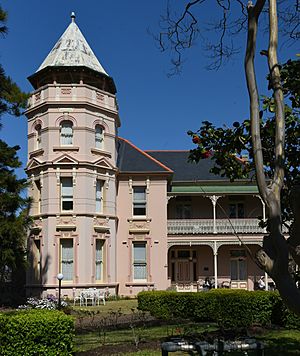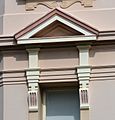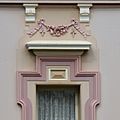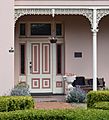Windsor Gardens, Chatswood facts for kids
Quick facts for kids Windsor Gardens |
|
|---|---|

Windsor Gardens
|
|
| Location | 258-260 Mowbray Road, Chatswood, City of Willoughby, New South Wales, Australia |
| Built | 1888 |
| Architectural style(s) | Italianate |
| Owner | Millstern Health Care Pty Ltd |
| Official name: Windsor Gardens; Iroquios | |
| Type | State heritage (built) |
| Designated | 2 April 1999 |
| Reference no. | 571 |
| Type | Mansion |
| Category | Residential buildings (private) |
| Lua error in Module:Location_map at line 420: attempt to index field 'wikibase' (a nil value). | |
Windsor Gardens is a very old and special building in Chatswood, New South Wales, Australia. It was built way back in 1888! This building has had many different uses over the years. First, it was a family home, then a popular place for weddings and parties, and now it's a place where older people live, called a retirement village. It's so important that it's heritage-listed, which means it's protected because of its history and special design. It was added to the New South Wales State Heritage Register on 2 April 1999.
Contents
A Look Back in Time
How Windsor Gardens Began
Windsor Gardens was built in 1888 by an American journalist named Frank Coffee. He came to Sydney in 1882 to work for a newspaper. When it was first built, the house was called Iroquois. This name came from an American battleship that was visiting Sydney at that time.
A Place for the Community
In the early days, there wasn't a Catholic Church nearby, between North Sydney and Pymble. Because of this, a priest from Riverview College would hold Mass (a church service) once a month in the drawing room of Iroquois. This made the house an important meeting place for the local Catholic community.
Changing Hands and Names
The large Coffee family lived in the house until the late 1920s. Frank Coffee passed away in 1929. After the Coffees, the Burke family owned the house from about 1930 to 1945.
In 1945, a person named Allan Gilbert bought the property. He decided to change its name from Iroquois to Windsor Gardens. Allan Gilbert also changed what the building was used for. He turned it into a popular place for wedding receptions, where people could celebrate their marriages.
Protecting a Special Place
Because Windsor Gardens is such an important historical building, steps were taken to protect it. In 1986, a special order was made to make sure that any new building plans for the area would not harm the historical importance of Windsor Gardens. Then, in 1988, a permanent order was put in place to protect the property forever.
What Windsor Gardens Looks Like
Windsor Gardens is a beautiful, two-storey house built in the late Victorian style. It's made of brick and has a special outer layer called render. It features a two-storey verandah (a covered porch) and a tall, four-storey tower.
Inside, the house has many original features. The wood used for the interior, like the stairs, was imported from the USA, including cedar and walnut. You can even find Frank Coffee's initials hidden in the fancy plasterwork and the staircase!
The garden around the house is also very old and special. It still has many of its original plants, including some unique trees brought from Japan and California. These trees partly hide the house from the street, making it feel like a secret garden.
Why Windsor Gardens is Important
Windsor Gardens is considered a very important historical site for several reasons:
- It's a great example of a fancy Victorian gentleman's home from the late 1800s.
- It still has many of its original details, both inside and outside.
- As a wedding and reception center, it played a big part in the lives of many people after World War II.
- It was the home of Frank Coffee, an important early resident of the area.
- It served as an early place of worship for the local Catholic community.
Because of all these reasons, Windsor Gardens was officially listed on the New South Wales State Heritage Register on 2 April 1999.
Gallery
These images show some of the beautiful details of Windsor Gardens:






